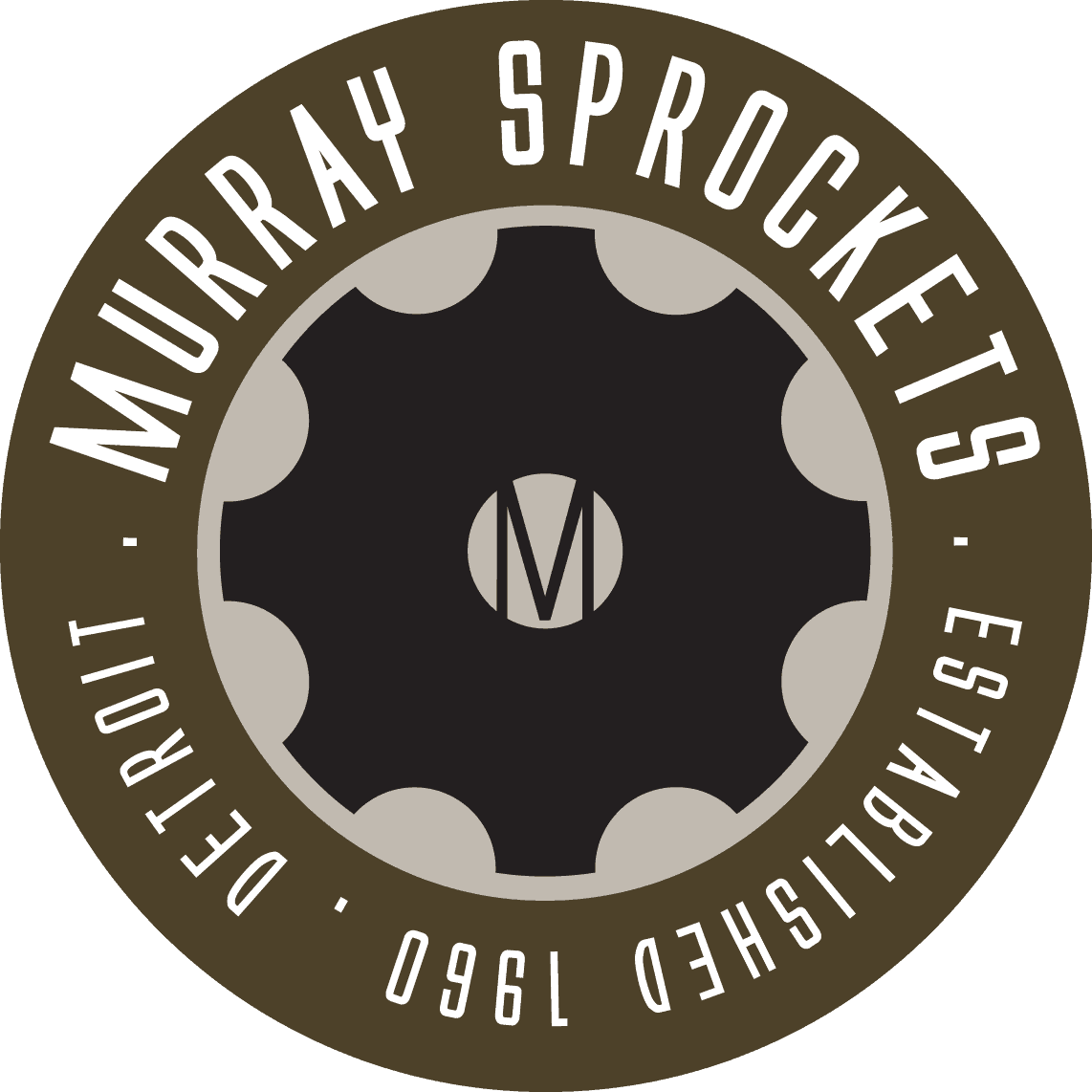Products
TORK-TROL - All Steel Shear Pin Hub
Tork-Trol hubs are compact and strong. They take less space on the shaft and have higher torque ratings than cast iron or iron-on-steel hubs of similar size.
All Steel Construction
Tork-Trol hubs are compact and strong. They take less space on the shaft and have higher torque ratings than cast iron or iron-on-steel hubs of similar size.
Corrosion-Resistant Bronze Bushings
Hub sections that rotate when a pin shears are separated by a bronze busing. They can’t fret or corrode together. Breakaway torque is always uniform and repeatable.
Disc-Type Design
Pins are located in solid steel disc, which is much stronger and more reliable than “arm-type” designs. Disc-type design also makes it possible to provide multiple pin locations where desired.
Pins Mounted in Special Shear Bushings
heat treated, sharp-edged shear bushings are press-fit at the head to provide a true shearing action. Pin bending, common with ordinary drill busing equipped hubs, is minimized for more reliable operation.
Weld Steel Sprockets
Standard construction on Tork-Trol hubs, eliminates the inherent problems of bolted sprockets. Hub and sprocket are welded together for maximum strength.
Outstanding Versatility
Two standard styles, and the widest range of stock sizes in the industry make Tork-Trol hubs your best choice for most applications. And, where a special hub is needed, Trok-Trol’s simple design makes modification quick and inexpensive.
Tork-Trols are premium quality shear-pin hubs, designed to protect heavily loaded slow-speed drives against damage from overloads and stalls. They are built in two styles with standard bore sizes form 7/8” to 9-1/2”. Larger bores available on request. Use them with Murray’s precision flame-cut steel conveyor sprockets, compensating drive sprockets, or roller chain sprockets, to build reliable, low-cost, shear-pin protected drives for your equipment. They combine the advantages of custom-built drives with the economy of standard, off-the-shelf components and the strength of all-steel construction.
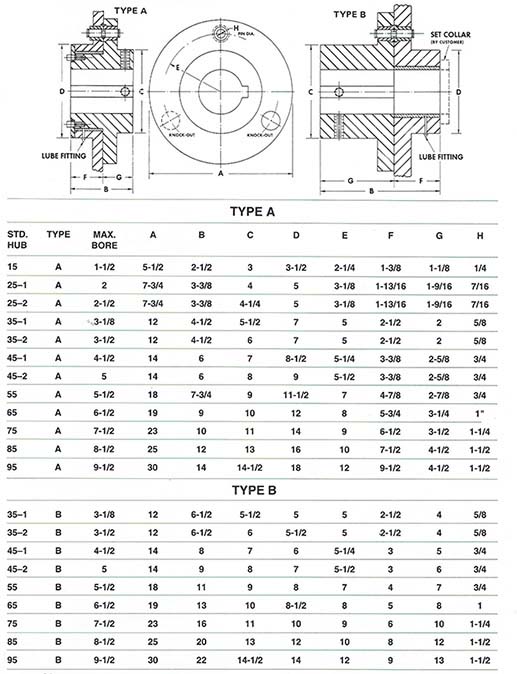
General Dimensions - Standard Tork Trol
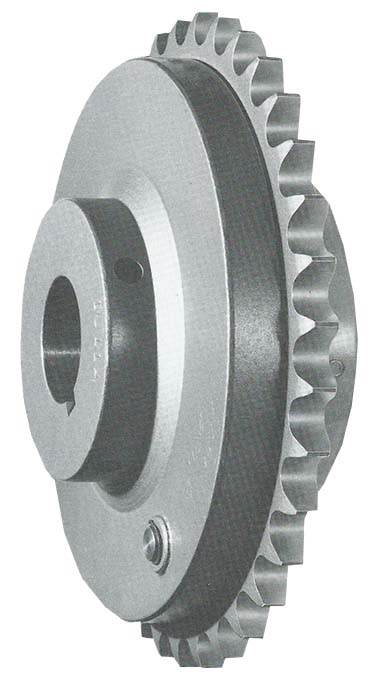
TORK-ALARM - Shear Pin Monitors
Shear Pin Monitors, The logical companion for Tork-Trol Hubs. Tork-Alarm will sound a warning, or shut down a drive, within 10 degrees of drive rotation after a pin shears. Unlike overload clutches or spring-detent devices.
Instant Warning of Pin Failure
Tork-Alarm will sound a warning, or shut down a drive, within 10 degrees of drive rotation after a pin shears.
Unique Design
Unlike overload clutches or spring-detent devices, Tork-Alarm does not carry any part of the load. It can’t wear out or change capacity with use.
Mechanical Simplicity
Tork-Alarm is rugged, all mechanical device, with a minimum number of parts. All-steel construction, with heat treatment where necessary for strength and wear resistance. Elimination of complex mechanisms ensures optimum reliability.
Complete Compatibility
Can be used with any size or style Tork-Trol hub and sprocket. Basic design simplicity makes even special models economical.
Remote Signaling Capability
You can monitor performance of hidden drives from a central station. Known instantly when a pin shears.
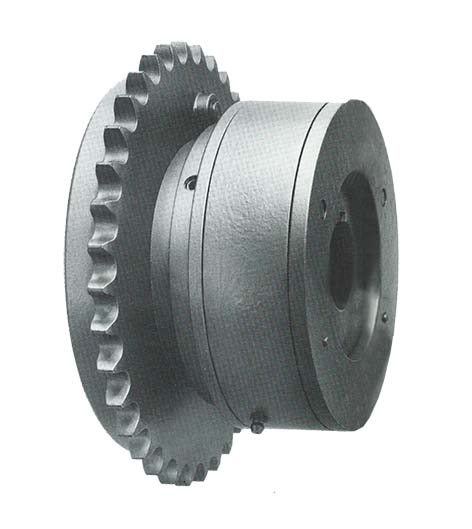
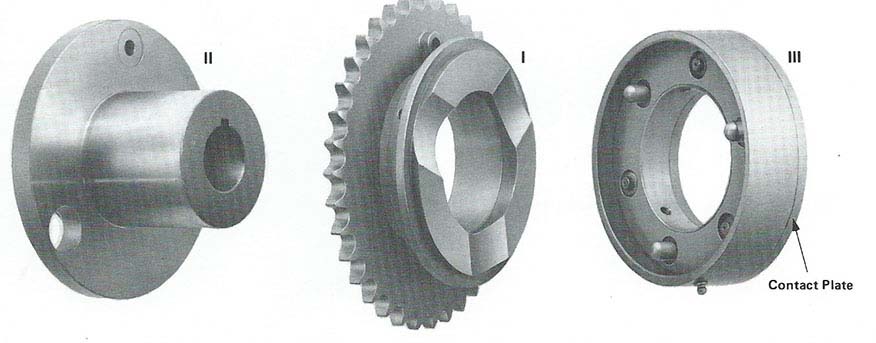
How Tork-Alarm Works
Part I is secured to the sprocket, Part II to the shaft. Part III, the Tork-Alarm mechanism, is attached to Part II or shaft, but has a contact plate that is free to move along the shaft axis. While the shear-pin is intact, all parts rotate together. When a pin shears, Part I continues to rotate, but Parts II and III stop. Continued rotation of Part I forces cam pins attached to the contact plate out of their grooves, resulting in linear motion of the plate. This motion is used to trip a limit switch (not supplied) to sound an alarm or shut down the
TRU-CUT Sprockets - Flame Cut Steel
Tru-Cut flame cut sprockets are more accurate, tougher and harder than cast tooth sprockets. Widely used with “Engineering-Class” chains for slow speed power transmission. Stronger than cast iron sprockets.
TRU-CUT steel sprockets have many advantages
• Being made from his carbon steel plate, Tru-Cut sprockets have a 300% higher tensile
• Steel sprockets are unbreakable
• Since 1045 plate is used, the “as burned’ tooth hardness of flame-cuts averages 30-35 Rockwell C and is harder than all iron sprockets except heat treated alloy iron castings wich approach 40 Rockwell C. The tooth harness of Tru-Cut Sprockets can be increased to 55 Rockwell C by flame hardening. Harder tooth surfaces will wear longer.
• When used with ANSI roller chains the hard tooth surface (30-35 Rockwell C) resulting from the flame cutting process is a distinct advantage. Plate steel sprockets with machined teeth are much softer and having them heat treated to increase harness costs extra.
• Tru-Cut sprockets usually cost more than cast iron sprockets, but the quality, service and longer life more than offset the higher initial cost.
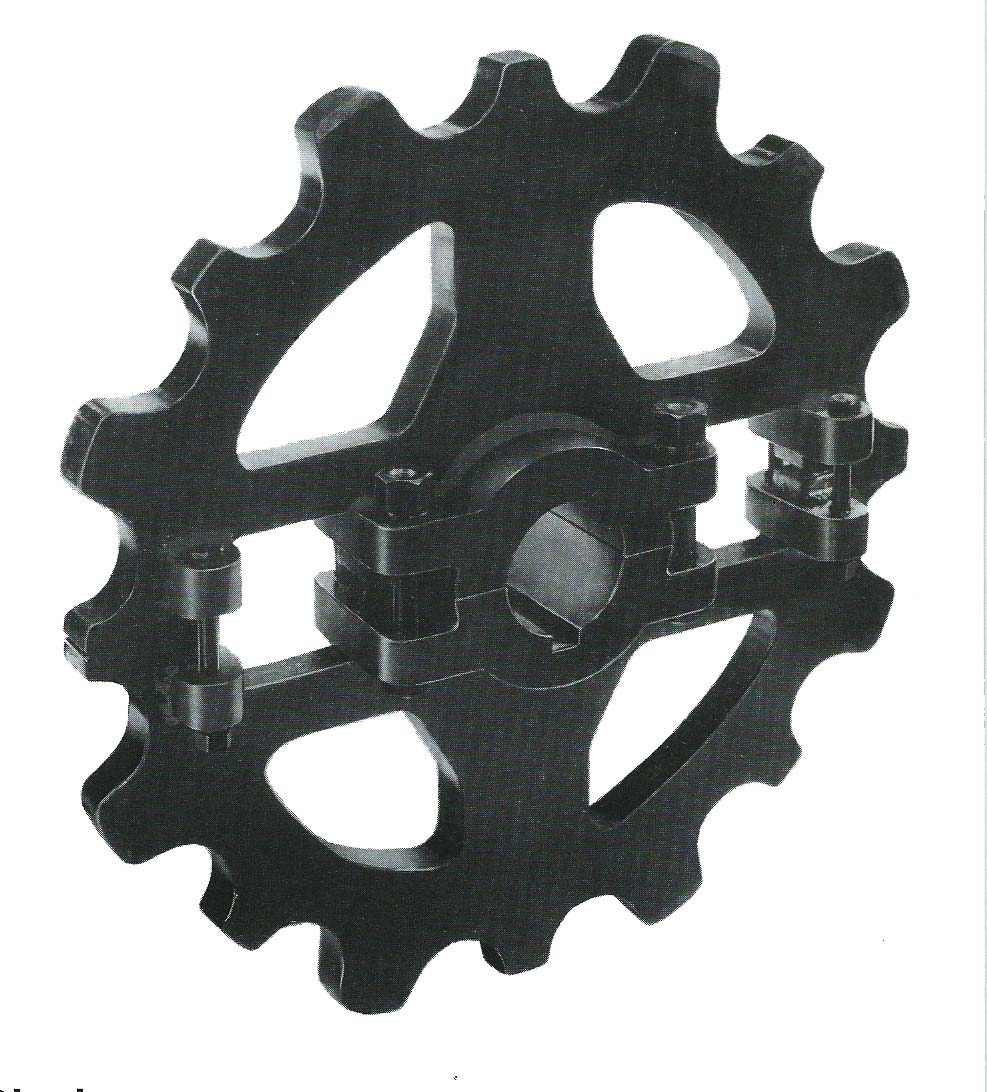
TRU-Cut sprockets are normally available in three to four weeks. This includes so-called special sprockets, regardless of pattern availability or size of the sprocket.
TRU-Cut sprockets can be furnished to 96” outside diameter in one piece. Larger sprockets are made in two or more mated sections. Plate thickness vary from 1/4” through 4”, in commercial widths. Smallest practical chain pitch for flame cutting is 1-1/2” and the minimum burned pitch diameter is approximately 3”. Maximum diameter, in segments is unlimited.
Many types of special sprockets can be furnished. These include split construction, gap-tooth, skip tooth, segmental rims, multiple width (two through four rims), ring sprockets, adjustable-hub, short chord segments, hunting tooth, double-duty, compensating, etc. sprockets. Any type hub is available (A, B, C, D, Shear pin, Taperlock, QD, and Shear coupling).
In Addition to Standard Sprockets - The Following Types Can Be Furnished
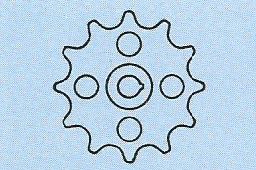
Double Duty sprockets have two teeth for each pitch so when one set of teeth is worn the chain can be advanced one half pitch to a new set of teeth. Often used with long pitch chains. These are similar to Hunting Tooth sprockets.
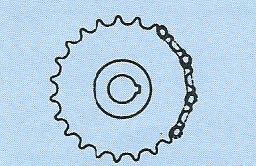
Hunting Tooth sprockets have an odd number of teeth with the pitch of the teeth one-half of the chain pitch. This causes the chain roller to advance one half pitch for each revolution, doubling the number of contacts and doubling the sprocket life.
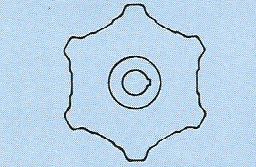
Skip Tooth sprockets have a pitch diameter with an even number of chain pitches with a tooth omitted at every other pitch. To figure the pitch diameter use twice the number of teeth. Drop - forged chains require this type of sprocket because of there solid “roller link”
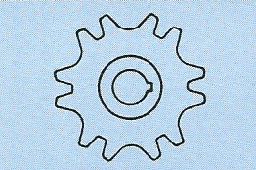
Gap Tooth sprockets are used with chains having through rods or rollers located between the chain pin rollers that articulate over the sprocket. clearance in the tooth form is provided for these rods.
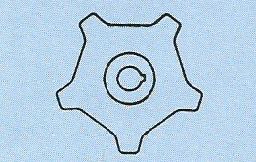
Draw Bench chains often have alternate pitches of different lengths and are skip tooth design, when “roller” link is solid bar. The higher tensile of steel sprockets is advantageous.
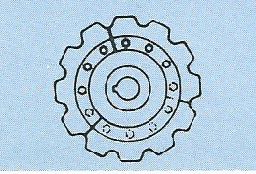
Segmental Rim sprockets have a bolt-on rims in 3, 4 or more pieces. The sprocket rim can be replaced without removing the chain from the sprocket or the sprocket from the shaft. This type is ideal for elevators. The hubs can be made in solid or split construction.
